- Category
- War in Ukraine
Everything You Need to Know About How Drones Redefine Modern War
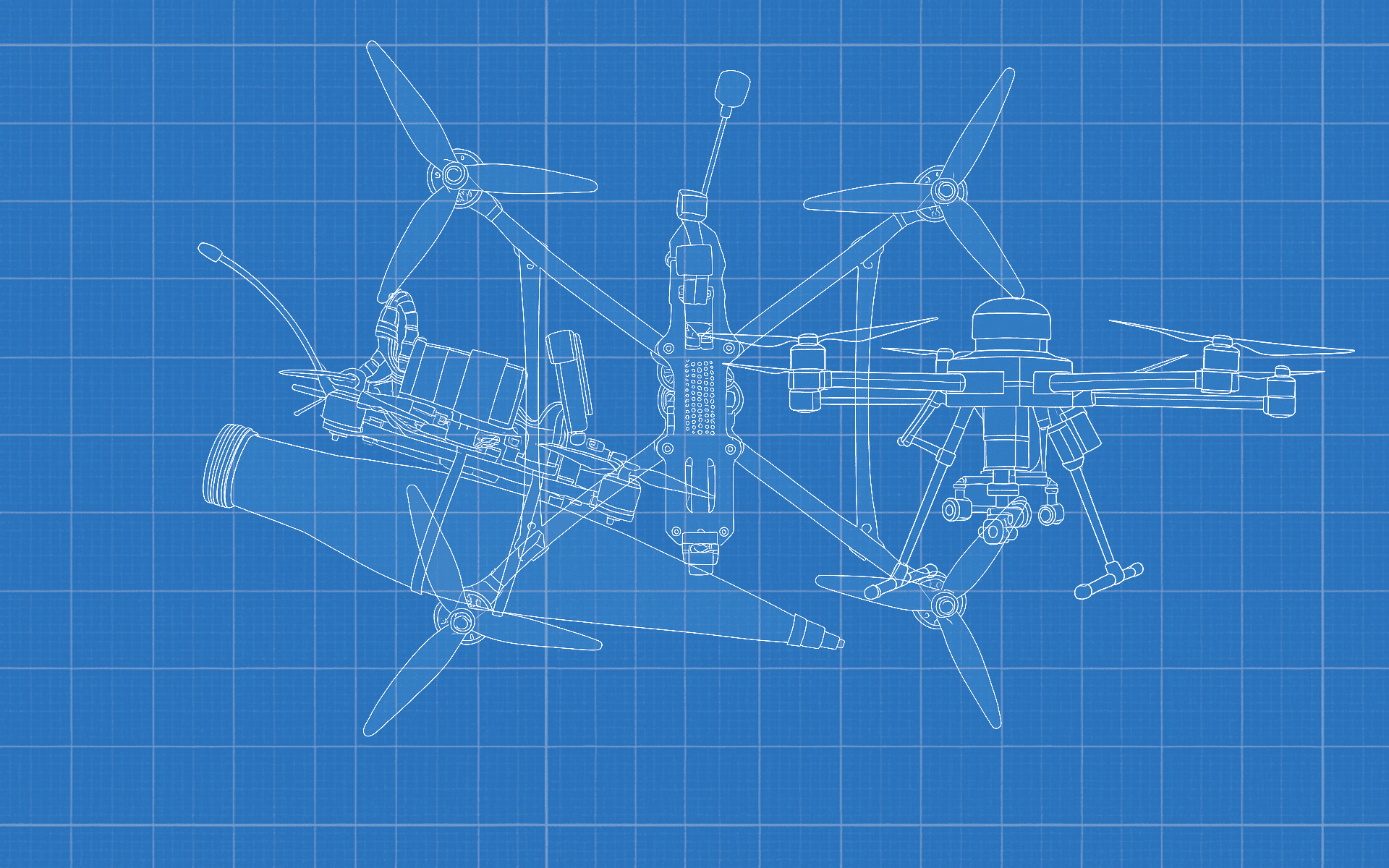
What began with soldiers strapping grenades to hobby drones has evolved into one of the most radical shifts in modern warfare. From $500 FPVs to sea-borne strike boats capable of downing Russian Su-30s, Ukraine is leveraging technology as a force multiplier that keeps Russia’s size advantage in check.
When Russia launched its full-scale invasion of Ukraine in February 2022, the world watched columns of tanks snake toward Kyiv, missile trails in the sky, and exhausted civilians sheltering underground. It initially appeared to be a brutal return to 20th-century warfare, the kind characterized by trenches, artillery, and sheer manpower. And for a while, that’s exactly what it was.
But something changed. Amid the challenges of being the underdog, Ukraine started fighting smarter. Soon, Russia caught on, sparking a brutal race to out-innovate and out-produce each other in a war now defined by technology and ingenuity.
Enter: drones—lots of them.
At the start of the war, some Ukrainian soldiers were equipped with anti-tank launchers like the Javelin system, but couldn’t use them to their full effectiveness as Russian vehicles were hidden behind tree lines or trenches, and locking on meant exposing oneself to direct fire.
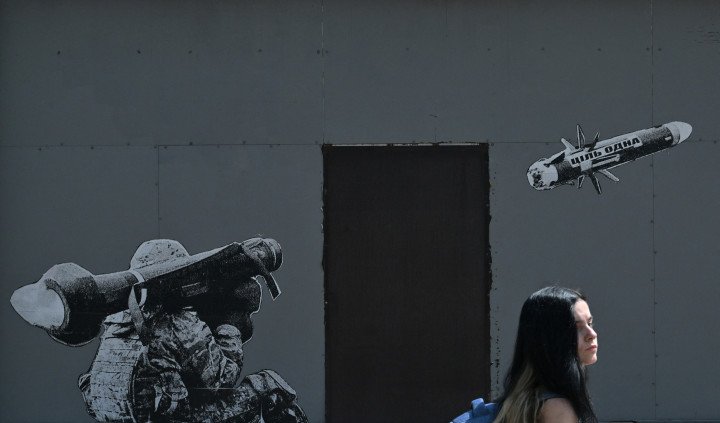
Under constant shelling and unable to strike back, frustration on the front lines gave way to innovation. By 2022, some units began building improvised FPV drones, starting with off-the-shelf models that could be purchased on Amazon. Soldiers rigged them with grenades or explosives, turning them into suicide drones or scouts. They weren’t pretty, but they were fast, cheap, and effective—able to hit targets that weapons like the Javelin couldn’t reach.
Suddenly, Ukraine’s smaller, less-equipped army could punch above its weight, countering Russia’s sheer quantity. Soldiers were no longer the only line of defense. Drones, often costing just a few hundred dollars, could track and strike Russian forces and equipment deep behind the lines, stopping them before they ever reached Ukrainian positions.

Fast-forward to 2025, and drones are no longer Ukraine’s secret weapon. They’re a massive industry being scaled exponentially by both sides and monitored by third parties worldwide. They’re also arguably the defining weapon of the war.
Today, drones touch nearly every part of Ukraine’s defense strategy. They scout, they strike, they jam signals, drop bombs, guide artillery, and evacuate the wounded. Some are barely bigger than a pigeon; others are the size of a Cessna, have a 1,000-kilometer range, and hit oil refineries deep inside Russia.
At any given moment near the frontline, there is an overwhelming number of drones that are in the air, in the sea, and now even on land, conducting assaults against enemy soldiers and their equipment.
The ongoing threat and intensity of the war have created clear parameters for ingenuity, and the rest of the world is taking note. Ukraine has pioneered a new, highly effective method of warfare that embraces technology as a force multiplier, then something like a spectacle.
So what started as an idea born out of dire straits has evolved into a full-blown military-industrial renaissance. Ukraine has built a sprawling ecosystem of drone manufacturing, pumping out First-person view (FPV) drones, loitering munitions, naval suicide drones, and more, at scale. Entire factories have pivoted from making consumer tech to churning out combat-ready hardware
The war has created its own Silicon Valley.
Brave1: Ukraine’s startup incubator for war
Central to this shift is Brave1, Ukraine’s government-backed defense tech initiative that’s part incubator, part venture capital arm, and part battlefield pipeline. Think CES, but for military-grade drones and related technologies.
Launched in 2023, Brave1 gives grants to civilian startups working on defense tech, fast-tracks legal permissions, and provides direct access to Ukraine’s Defense Ministry. Engineers and coders who once built apps or hardware are now prototyping autonomous targeting systems and anti-jamming modules. In just under two years, Brave1 has greenlit over 540 projects, totaling 220 billion UAH (~$5.3M).
“Brave1’s technologies are our advantage and an asymmetric response to Russia’s actions,” said Ukraine’s Digital Transformation Minister, Mykhailo Fedorov. “Now our task is to search for new game-changers to further strengthen the army.”
One Brave1-backed project, Burevii, created a ground-based robotic platform called Ardal that was used to evacuate wounded soldiers under fire. In one mission near Kupiansk, it carried injured troops to safety in the Kharkiv direction while under drone surveillance and shelling. Systems like the TerMIT and the Zmiy-500 are already in use and have proven to be effective. Other teams are developing autonomous drone swarms that can coordinate strikes with minimal human input.
FPV Drones: the $500 weapon that’s changing everything
First-person view (FPV) drones have become one of, if not the deadliest, tools in Ukraine’s arsenal. Bought online and often assembled in basements or garages, these drones are now responsible for a massive share of the war’s casualties and destruction. The New York Times, quoting Roman Kostenko, the chairman of the defense and intelligence committee in Ukraine’s Parliament, suggests that 70% of all Russian and Ukrainian casualties are caused by drones.
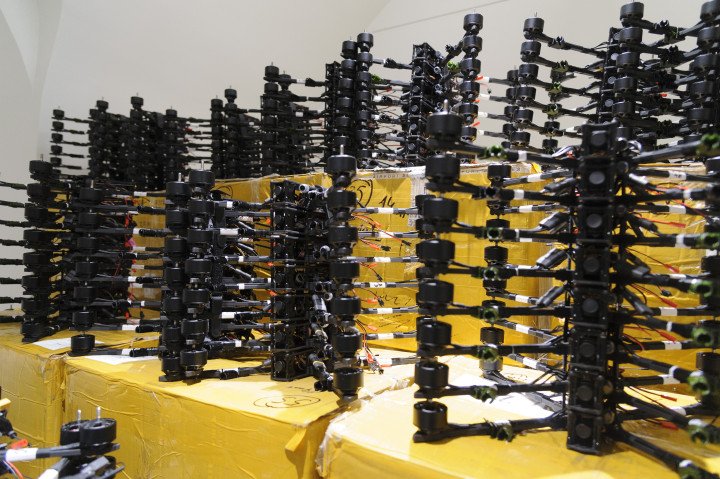
Ukrainian military reports that FPV drones accounted for 49% of all Russian equipment losses in January 2025 alone. That includes tanks, armored vehicles, and artillery systems, all taken out by drones that likely cost less than the device you are currently reading this article on.
These drones are fast, precise, and terrifyingly efficient. They are flown by operators wearing headsets, steering them into enemy trenches, vehicles, or even individual soldiers, almost like they’re playing a video game. Ukraine has since created the Unmanned Systems Forces, a dedicated branch of the military focused entirely on drone warfare. On top of that, nearly every battalion across the Armed Forces now includes its drone units, making this technology a core part of how Ukraine fights.
For Ukraine, they’ve become a great equalizer. A $500 drone can destroy a $2.5 million tank. Even if it takes a few tries, the math still works in Ukraine’s favor. And with domestic production ramping up, including a goal of producing 4.5 million FPV drones in 2025.
But with their growing presence, countermeasures have grown too. Electronic warfare systems—the kind that jam signals or seize control of drones mid-flight—have become the primary defense for both sides. Many FPVs can now be instantly grounded or misdirected by these jammers. In response, fiber optic-fed FPV drones are on the rise; they use physical cables to stay connected between the drone and the operator, making them nearly impossible to jam.
Yes, it looks a little insane—a drone flying through the air with a 20km long cable spooling behind it—but it works. And right now, that’s the only metric that matters in an ever-changing battlefield.
Not all drones fly
While most of the spotlight is on what’s buzzing overhead, some of the most game-changing innovations in Ukraine’s drone war are happening on the ground.
Unmanned ground vehicles (UGVs)—essentially small robotic platforms on wheels or tracks—are already playing a critical role on the front lines. There are a few main types:
Logistics drones, notably the UNEX UGV or TerMIT, are used to transport ammunition, food, or medical supplies across dangerous terrain.
Evacuation drones like the Targan and CRAB-LS have armored platforms that retrieve wounded soldiers from active combat zones.
Mine-clearing and Minelaying UGVs, with examples like the ZMIY, SIRKO-S1, and KNLR-E, are specialized robots used for remotely deploying or clearing mines, reducing risk to human personnel
Reconnaissance UGVs, mainly the MOROZ, are equipped with cameras and sensors for scouting urban or trench environments.
Assault drones: UGV like the Shablya M2 and Lyut carry explosives or weapons and use them directly against the enemy.
Some are remote-controlled, others semi-autonomous. Most are built for speed and a low profile. Many are improvised: assembled in workshops, basements, and R&D labs by volunteer groups.
But these aren’t just support tools anymore. They’re being used to fight.
In March 2024, Ukraine conducted what’s believed to be the first-ever battlefield assault carried out entirely by drones—no human soldiers involved. The operation in the Donetsk region involved a coordinated strike by ground-based suicide robots, FPV drones, and reconnaissance drones working in tandem. Footage showed the robotic ground vehicles approaching and detonating inside Russian trenches, while aerial drones relayed live video and cleared out remaining targets.
It was a successful offensive maneuver and a glimpse of what modern warfare might look like in the very near future.
Sea drones change traditional naval warfare
Ukraine is redefining naval warfare through the deployment of unmanned surface vehicles (USVs) and effectively challenging Russia's naval dominance in the Black Sea without even having a traditional navy.
Taking center stage is the MAGURA V5, a Ukrainian-developed USV designed for high-speed, stealth operations. Equipped with explosive payloads, the MAGURA V5 has been instrumental in targeting Russian naval assets. It was involved in the sinking of the Russian landing ship Caesar Kunikov in February 2024, as confirmed by Ukrainian defense sources.
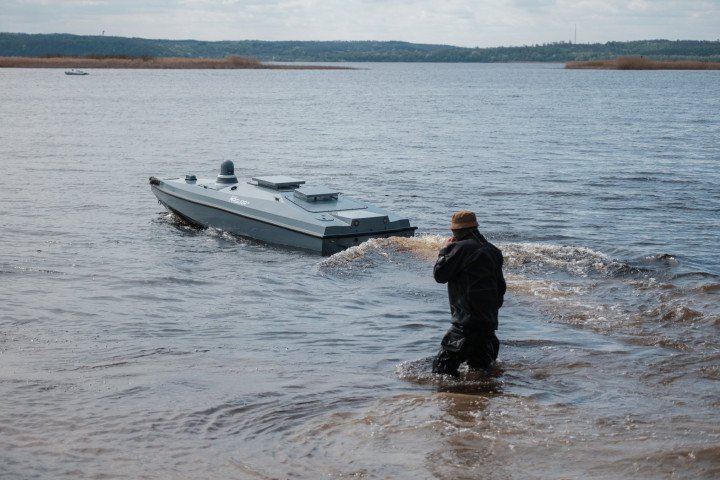
Building upon the V5's success, Ukraine introduced the MAGURA V7, an enhanced variant capable of carrying anti-aircraft missiles. In a significant development, the V7 reportedly shot down two Russian Su-30SM fighter jets over the Black Sea in May 2025, marking it the first ever autonomous boat to shoot down planes.
Complementing these offensive USVs, Ukraine has developed drone carriers capable of launching aerial drones from the sea. These platforms extend the operational reach of Ukraine's drone fleet, allowing for coordinated attacks on Russian positions.
World first: On May 2, 2025, the @DI_Ukraine special operations unit, in coordination with the Security Service of Ukraine and Defence Forces of Ukraine, eliminated a russian Su-30 fighter jet in the Black Sea.
— Defence Intelligence of Ukraine (@DI_Ukraine) May 3, 2025
🔗 https://t.co/DXhg74AKcg pic.twitter.com/Z4fP5CFRb8
Ukraine’s also developed underwater drones—the TLK-150 and TLK-400—built for both recon and strike missions at varying ranges. They add a new layer of threat to the Russian ships in the Black Sea that block maritime trade and launch daily missile strikes against Ukraine.
The impact of these unmanned systems has been massive. Russia’s had to pull parts of its Black Sea Fleet back to safer ports, rendering Russia less effective at striking Ukrainian coastal cities and their ports. Ukraine’s use of sea and underwater drones proved that you don’t need a big navy to fight one.
Deep-strike drones are hitting Russia’s military core
Ukraine’s drone program isn’t just about defense anymore, it’s taking the fight deep into Russia’s economic and military heartland. Throughout 2024 and into 2025, long-range drones have hit oil refineries, munitions plants, radar stations, and airfields hundreds of kilometers inside Russian territory, including in places like Tatarstan, Krasnodar, and even the outskirts of Moscow.
Some of the most painful strikes have been on oil refineries, a key pillar of Russia’s war economy. These attacks have disrupted fuel exports, forced shutdowns at major processing facilities, and exposed just how vulnerable Russia’s energy sector is to cheap, precise, and uncrewed weapons.
Ukraine is steadily expanding its arsenal of long-range systems. The Batyar drone, revealed in April 2025, has an 800-kilometer range and can carry a 3kg warhead to hit targets deep behind enemy lines
The BARS drone missile, unveiled earlier this year, can travel up to 500 miles (about 800 km) and strike industrial and military targets with precision.
And it’s not just drones. Ukraine’s growing family of homemade missile systems—like Neptune, Palianytsia, Peklo, and Ruta—has expanded Kyiv’s strike capability even further, reaching targets Russia once considered out of range
In response, Moscow has started building new munitions factories in remote parts of Siberia, hoping to keep them out of drone range. Because of Ukraine’s technological cunning, the Kremlin is reshaping its industrial geography to survive a war it thought would be fought on someone else’s land.
Ukraine’s new point-based system for war management
We’re still at the beginning of what drone warfare is going to become. Ukraine, out of sheer necessity, has built something that’s reshaping how modern wars are fought—faster, cheaper, decentralized, and way more adaptable than anything big armies with big budgets are fielding.
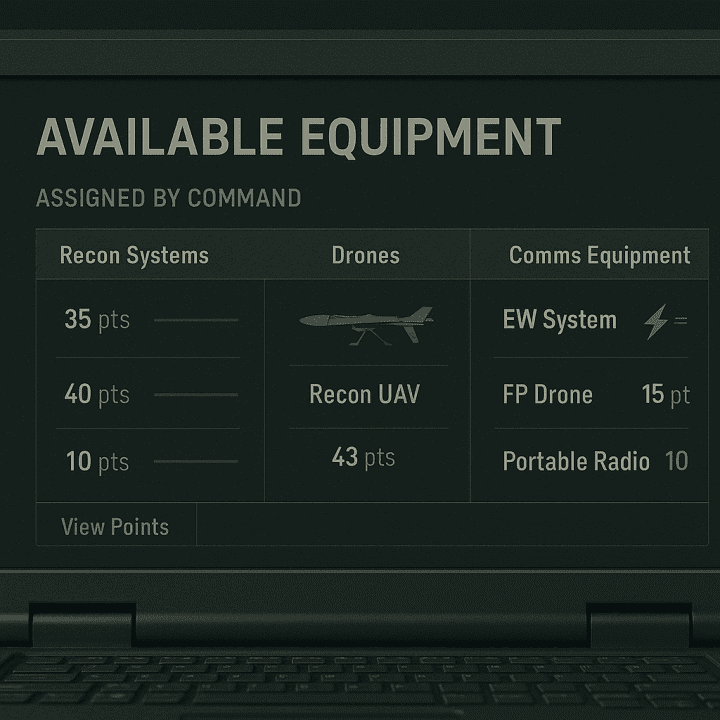
And now, there’s structure to it. In early 2025, Ukraine rolled out a point-based reward system for drone operators, which became a way to log kills, damage, and successful missions with real-time data and direct payouts. Those points can be redeemed through a dedicated system called “Army of Drones Bonus” to get more drones like FPVs, bombers, or whatever the unit needs next. Every confirmed hit has a score attached to it:
You destroyed a tank? That’s 40 points (20 if you damage it). Hit an infantry group? Fewer points, but still something. Operators earn money, battalion-level stats get logged, and command gets a clear picture of what’s working. This system is already changing how units plan, strike, and innovate, scaling what works fast.
While Russia still has more troops, tanks, and missiles, Ukraine has the drive and ingenuity to out-engineer the invading force. The war may have started in the trenches, but it’s ended up defining what modern warfare looks like.

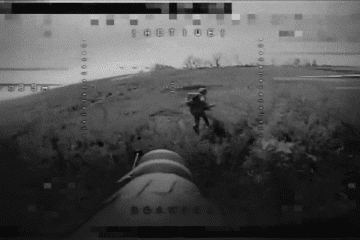
-29a1a43aba23f9bb779a1ac8b98d2121.jpeg)

-24deccd511006ba79cfc4d798c6c2ef5.jpeg)


